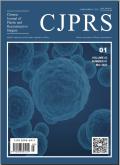Treatment efficacy of sclerotherapy by polidocanol vs. bleomycin for pyogenic granuloma in children: A comparative study
Chinese Journal of Plastic and Reconstructive Surgery
Pub Date : 2025-09-01
DOI:10.1016/j.cjprs.2025.07.002
引用次数: 0
Abstract
Background
Pyogenic granuloma (PG) is a benign vascular skin lesion that occurs in children. Although, sclerotherapy is a common treatment for patients with PG, all the previous studies have been case reports or series. At present, no reports have compared the efficacy of the two different sclerosing agents, polidocanol and bleomycin, in the treatment of PG. Therefore, we aimed to compare the cure rates and adverse reactions associated with these two agents in sclerotherapy for PG in children.
Methods
This retrospective analysis included children <18 years of age with PG undergoing cutaneous treatment at our hospital between January 2016 and January 2022. Two sclerosing agents, polidocanol and bleomycin, were topically injected. The efficacy and incidence of adverse reactions were compared between the two groups.
Results
A total of 117 children with PG were divided into the polidocanol (n=52) and bleomycin (n=65) groups. Lesions disappeared after one injection in 38 children, two in 11 children, and three in 3 children in the polidocanol group. A similar phenomenon was observed after one injection in 53 children, two injections in 8 children, and three injections in children in the bleomycin group. The single-injection cure rate was not significantly different between the two groups (P>0.05). The rate of adverse reactions was significantly different between the two groups (P<0.05). No severe complications occurred, and no recurrences were detected during the 6–12 months of postoperative follow-up period.
Conclusion
This study showed that both polidocanol and bleomycin are safe and effective sclerosing agents for treatment of PG in children. The incidence of adverse reactions to polidocanol was lower than that to bleomycin. We recommend sclerotherapy with polidocanol as a first-line treatment for PG, as it is suitable for application in hospitals at various levels.
多元醇与博来霉素硬化治疗儿童化脓性肉芽肿疗效比较研究
背景化脓性肉芽肿(PG)是一种发生于儿童的良性血管性皮肤病变。虽然硬化治疗是PG患者的常用治疗方法,但以往的研究均为病例报告或系列研究。目前还没有报道比较两种不同的硬化剂poly - canol和博来霉素治疗PG的疗效。因此,我们的目的是比较这两种药物在儿童PG的硬化剂治疗中的治愈率和不良反应。方法回顾性分析2016年1月至2022年1月在我院接受皮肤治疗的18岁PG患儿。局部注射两种硬化剂,聚多坎醇和博来霉素。比较两组患者的疗效及不良反应发生率。结果117例PG患儿分为多元醇组(n=52)和博来霉素组(n=65)。38例患儿注射1次后病变消失,11例患儿2例,3例患儿3例。博莱霉素组53例患儿注射1次,8例患儿注射2次,3例患儿注射3次均出现类似现象。两组患者单次注射治愈率差异无统计学意义(P>0.05)。两组不良反应发生率比较,差异有统计学意义(p < 0.05)。术后随访6 ~ 12个月,无严重并发症发生,无复发。结论聚多卡因醇和博来霉素是治疗小儿PG安全有效的硬化剂。聚多卡因不良反应发生率低于博来霉素。我们推荐将聚多卡因硬化治疗作为PG的一线治疗,因为它适合于各级医院的应用。
本文章由计算机程序翻译,如有差异,请以英文原文为准。
求助全文
约1分钟内获得全文
求助全文
来源期刊

Chinese Journal of Plastic and Reconstructive Surgery
Surgery, Otorhinolaryngology and Facial Plastic Surgery, Pathology and Medical Technology, Transplantation
CiteScore
0.40
自引率
0.00%
发文量
115
审稿时长
55 days
 求助内容:
求助内容: 应助结果提醒方式:
应助结果提醒方式:


